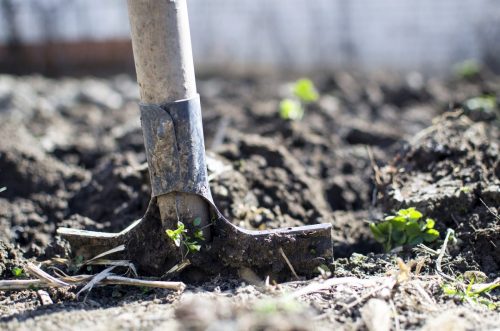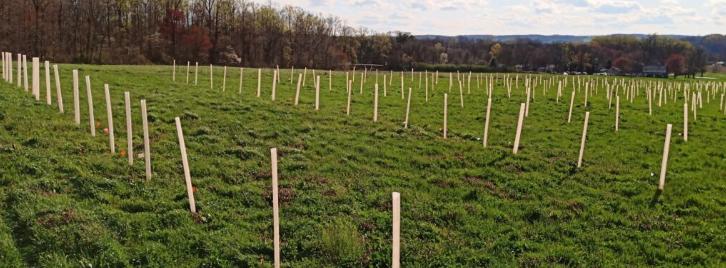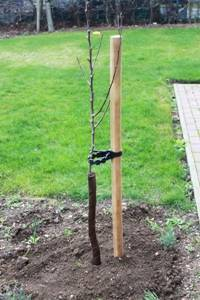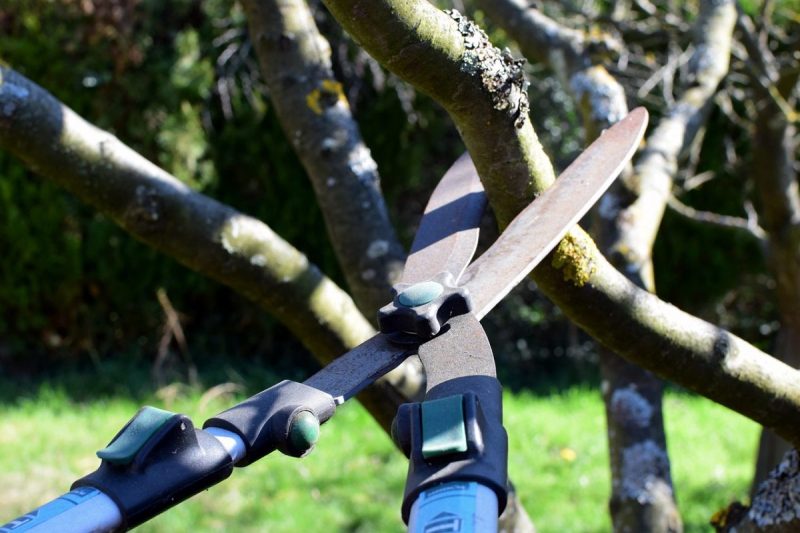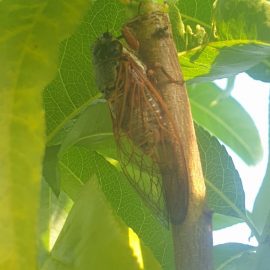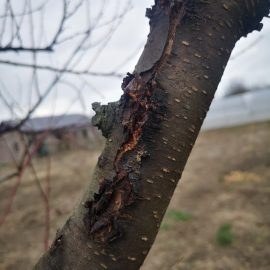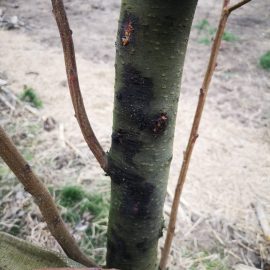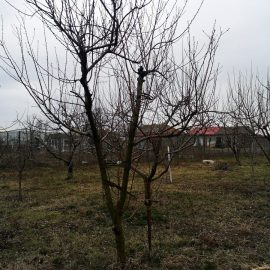Nectarine Care: Planting, Growing, and Harvesting Tips
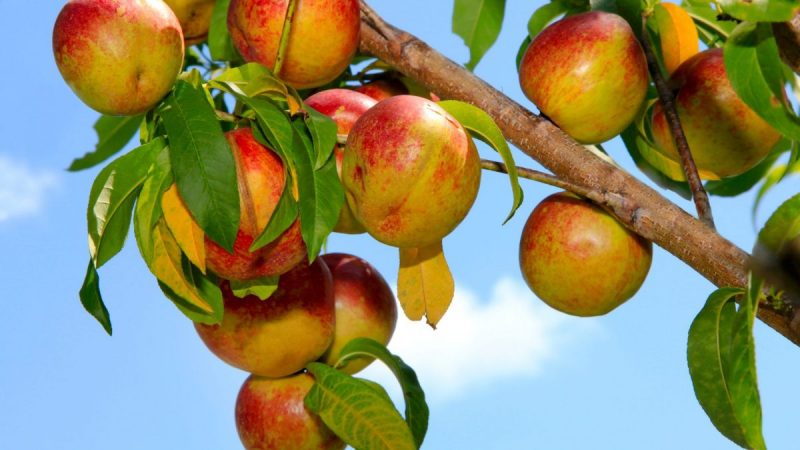
Nectarine (Prunus persica var. nucipersica) are members of the Rosaceae family, cultivated for their sweet and aromatic fruits. They’re a variety of peach (Prunus persica) that arose from a natural genetic mutation. Unlike peaches, nectarines have a smooth, shiny skin without the fuzzy exterior.
This smooth skin makes nectarines easier to transport and handle compared to peaches. They come in a delightful range of flesh colors, including white, yellow, and even a deep red variety known as the Blood nectarine.
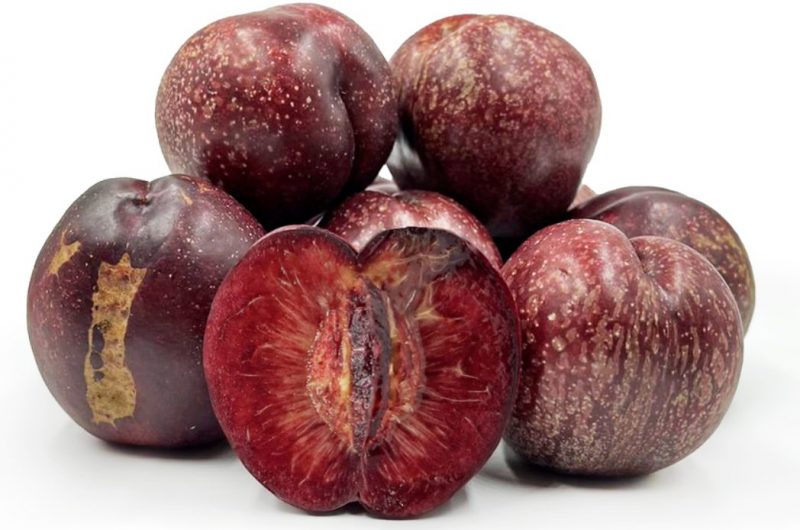
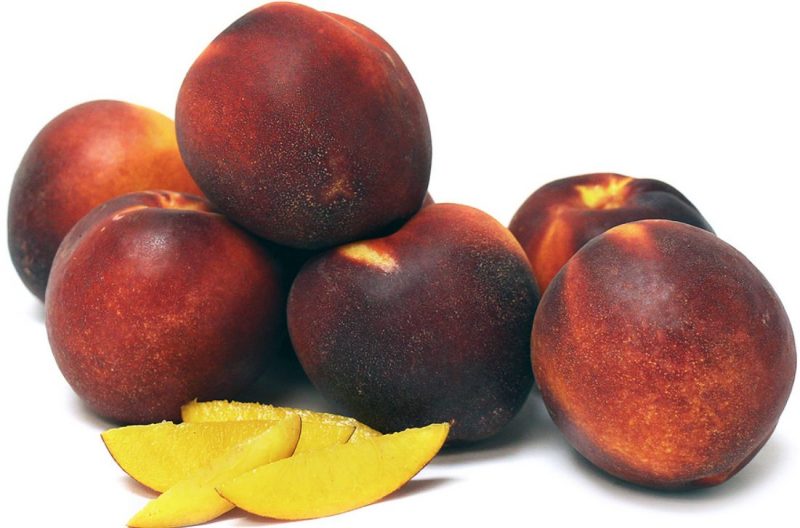
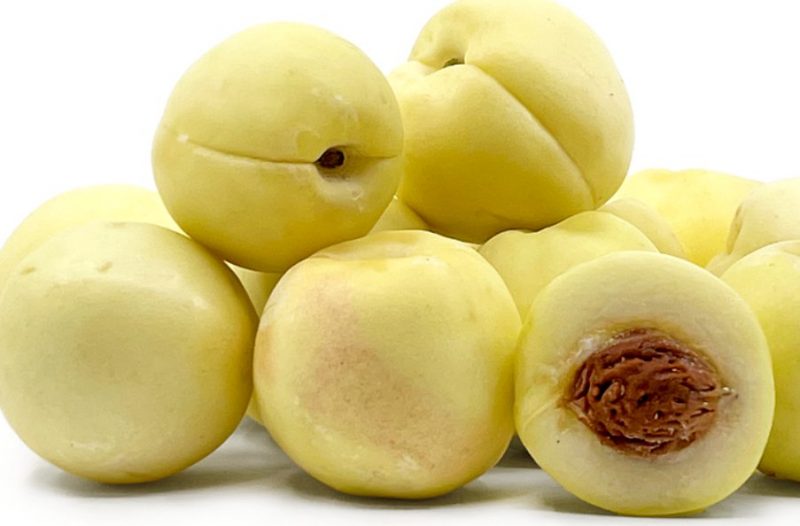
Nectarine trees boast glossy green leaves, shaped like long, pointed tips – like lance points. Their delicate flowers peek out from where the leaves meet the stems (leaf axils), either solo or in charming clusters of two or three along the branches. These blossoms typically have five petals, usually a lovely shade of pink, although white varieties exist too. They’re surrounded by five green sepals (protective leaf-like structures) and three sets of pollen-producing stamens.
Nectarines and peaches share a striking resemblance in appearance. Both trees tend to be on the smaller to medium-sized side. In orchards, growers typically maintain these trees at a manageable height of 3 to 4 meters (around 10 to 13 feet) by pruning the branches. This makes harvesting much easier.
Nectarine traits and growth:
Nectarines are a fascinating twist on peaches. They arise when peaches are crossed or self-pollinated, and a specific ” recessive gene” takes hold (the more common gene promotes fuzzy skin). Occasionally, even a single peach tree might sprout a nectarine branch due to a natural mutation.
The good news is that nectarines thrive in similar conditions as peaches. They prefer well-drained soil rich in nitrogen, with some sand or gravel for good drainage. Their roots grow most actively in spring and autumn when the soil temperature hits a sweet spot between 8-20°C (46-68°F).
In their early years, nectarine trees experience a growth spurt, putting out 1-3 sets of new shoots that quickly fill out the crown. Luckily, you can give this process a nudge through pruning. Strategic pruning can accelerate crown development, potentially shaving off 1-2 years from the time it takes for the tree to mature.
Flowering typically occurs in April-May, depending on the climate, and requires temperatures of at least 10-12°C (50-54°F). Once a nectarine tree starts producing fruit, its vegetative growth slows down. The good news is that you can expect a productive 2-3 years after planting.
Sunshine and soil
Nectarines are sun-loving, thriving in warm climates with average annual temperatures around 10-12°C (50-54°F). While they can handle winter chills as low as -24°C (-11°F), their buds appreciate temperatures no colder than -3.9°C (25°F) to stay healthy.
These tough trees can withstand periods of drought, but for the best fruit production, keeping them well-watered is key, especially as the juicy fruit ripens. However, too much water can suffocate the roots, so good drainage is essential. Similarly, high humidity in the air can make them more susceptible to disease and worsen the effects of winter frost.
To keep your nectarine healthy, provide it with plenty of sunlight. When planting, choose a south-facing if possible, to maximize light exposure. Don’t forget about some strategic pruning to ensure good air circulation throughout the branches. Remember, a lack of sunlight can lead to stunted growth, increased frost sensitivity, and a disappointing harvest with fewer, smaller fruit.
Land preparation for nectarines
To ensure optimal growing conditions for your nectarine trees, selecting the right soil is crucial. Ideally, the soil should be fertile and well-draining, with a texture ranging from medium loam to sandy loam. These soil types allow for good root development and prevent waterlogging.
If planting on a slope, it’s best to position the trees higher. Additionally, orienting the rows in a north-south direction can maximize sun exposure for each tree.
Land preparation should follow established best practices. Here are some key considerations:
- Previously used orchard land: if the planting area was previously an orchard, dedicate 1-2 years of preparation before introducing nectarine trees. This timeframe allows the soil structure to recover and minimizes the risk of existing disease outbreaks. Consider planting perennial grass crops during this period to improve soil health.
- Weed control: if the plot is heavily infested with weeds, carefully consider using herbicides as a last resort. Herbicide application should be targeted and follow all safety guidelines. Alternative methods like mechanical cultivation or hand weeding might be preferable depending on the severity of the infestation.
Recommended products
-
You can find products on a different store
Change Store -
You can find products on a different store
Change Store -
You can find products on a different store
Change Store -
You can find products on a different store
Change Store -
You can find products on a different store
Change Store -
You can find products on a different store
Change Store -
You can find products on a different store
Change Store -
You can find products on a different store
Change Store -
You can find products on a different store
Change Store -
You can find products on a different store
Change Store -
You can find products on a different store
Change Store -
You can find products on a different store
Change Store -
You can find products on a different store
Change Store -
You can find products on a different store
Change Store -
You can find products on a different store
Change Store -
You can find products on a different store
Change Store -
You can find products on a different store
Change Store -
You can find products on a different store
Change Store -
You can find products on a different store
Change Store -
You can find products on a different store
Change Store -
You can find products on a different store
Change Store -
You can find products on a different store
Change Store -
You can find products on a different store
Change Store -
You can find products on a different store
Change Store
- Field staking
For accurate planting, you can stake out the land. This consists of marking the position of each tree in the field by inserting a stake in the planned planting site.
Planting
The best time to plant most nectarine varieties is in the fall, when the temperatures have cooled down. It’s important to get your trees from a reputable nursery to ensure they’re healthy and suited to your climate.
There are two main planting schemes to consider, depending on your space and desired yield:
- Classic system: this method involves spacing your trees 5 meters apart in rows that are 4 meters apart. This provides ample room for the trees to mature and allows for easier maintenance.
- Intensive system: if you’re short on space and want to maximize your harvest, you can plant the trees closer together in a 4 meter by 2 meter grid. Keep in mind that this method might require more pruning to maintain good air circulation and light penetration.
- Root prep: before planting, gently prune the roots to remove any damaged or dead sections. Healthy roots can be shortened to a length of around 7-8 centimeters to encourage new growth.
- Planting: dig a hole large enough to comfortably accommodate the root system. Avoid disturbing the healthy roots any more than necessary. Nestle the tree in the hole and ensure the root crown (where the stem meets the roots) sits slightly above the soil level. Backfill the hole with soil, tamping it down gently to eliminate air pockets.
Optional root dipping:
If your trees have traveled a long distance, you can soak the bare roots in water for a couple of hours before planting to rehydrate them. However, this step isn’t always necessary, especially if the nursery you purchased from has taken proper care during transport.
The planting process
Step-by-step guide:
- Dig the hole: if the soil is well-hydrated, you can dig the hole 1-2 days before planting, or even on the same day. Aim for a hole that’s roughly 40 cm (16 inches) deep and wide on all sides.
- Prepare the base: at the bottom of the hole, add a mixture of fertile soil and well-decomposed manure. This will give your new tree a nutrient boost to get started.
- Position the tree: carefully place your nectarine tree in the hole, ensuring the roots spread out comfortably on the fertile layer you created.
- Backfill and tamp: start filling the hole with soil, covering the roots with about 10 cm (4 inches) first. Gently tamp down the soil to remove air pockets and ensure good contact between the roots and the surrounding soil. Be careful not to break any roots during this process.
- Planting depth: as you continue filling the hole, position the tree at the right depth. The grafting point (the bump where the stem meets the rootstock) should be about 3 cm (1 inch) above the ground level, facing north. This positioning can help with winter hardiness.
- Staking and watering: once the hole is filled and tamped down, place a stake next to your nectarine tree for support. Finally, give it a good watering to settle the soil and hydrate the roots.
Pruning
Pruning young nectarine is crucial for developing a strong and balanced crown structure that will support future fruit production. Unlike other fruit trees, nectarines tend to form buds early, so most of the shaping happens through “summer pruning” rather than waiting for winter. Here are some of the benefits of summer pruning for nectarines:
- Directing growth: by removing unnecessary shoots, you can encourage the development of branches that will become part of the permanent “skeleton” of the tree. This promotes proper fruit production.
- Improved fruit quality: summer pruning allows more sunlight and air circulation to reach the developing fruit.
- Less winter work: by tackling some of the shaping throughout the growing season, you can minimize the amount of pruning needed during the winter months.
- Manageable size: summer pruning helps keep the fruiting zone (where the nectarines grow) closer to the main branches, preventing the center of the tree from becoming hollow over time.
Summer pruning:
Starting in the first year, around May, once new shoots reach a length of 10-15 cm (4-6 inches), you can begin summer pruning. Repeat this process 2-3 times throughout the growing season, depending on how fast your tree grows. During each session, select the strongest shoots you want to keep as part of the main structure and prune away any unwanted growth.
Years 3-4:
As your tree matures (around years 3-4) and begins fruiting, leave some mixed branches (branches with both leaves and flower buds). You can shorten these mixed branches to around 60 cm (2 feet) to encourage fruiting and space them 25-30 cm (10-12 inches) apart along the principal branches.
Established orchards:
In mature nectarine orchards, annual pruning remains important. This pruning focuses on maintaining the desired crown shape by thinning out older branches to allow for good light penetration and air circulation.
Recommended products
-
You can find products on a different store
Change Store -
You can find products on a different store
Change Store -
You can find products on a different store
Change Store -
You can find products on a different store
Change Store -
You can find products on a different store
Change Store -
You can find products on a different store
Change Store -
You can find products on a different store
Change Store -
You can find products on a different store
Change Store -
You can find products on a different store
Change Store -
You can find products on a different store
Change Store -
You can find products on a different store
Change Store -
You can find products on a different store
Change Store -
You can find products on a different store
Change Store -
You can find products on a different store
Change Store -
You can find products on a different store
Change Store -
You can find products on a different store
Change Store -
You can find products on a different store
Change Store -
You can find products on a different store
Change Store -
You can find products on a different store
Change Store -
You can find products on a different store
Change Store -
You can find products on a different store
Change Store -
You can find products on a different store
Change Store -
You can find products on a different store
Change Store -
You can find products on a different store
Change Store
Traditional and modern pruning
There are two main approaches to pruning nectarine trees: traditional pruning and modern (long) pruning. Both methods are typically done in late winter or early spring, once the threat of frost has passed.
- Traditional pruning: This method involves shortening branches for better fruit production and overall tree health. Mixed branches (those with both leaves and flower buds) are cut back to 25-30 cm (10-12 inches), while older branches (multi-annual) are shortened to 35-40 cm (14-16 inches). Any unwanted new growth from the current year (annual growth) is also removed.
- Modern pruning: This approach focuses on thinning out branches to improve airflow and light penetration. Mixed branches are thinned to 20-30 cm (8-12 inches), with any branches exceeding 70 cm (28 inches) getting a further shortening. Similar to traditional pruning, any excess new growth is removed.
Special considerations:
- Non-fruiting branches (wild shoots): Both methods aim to remove “wild” branches that don’t produce quality fruit. However, in a pinch, these branches (and “May bunches,” which are clusters of flower buds) can be used for fruiting if there’s a shortage of mixed branches or if frost has damaged the flower buds on existing branches. In such cases, these non-fruiting branches are shortened to just 2-3 buds to encourage them to support and nourish developing fruit.
- Spent fruiting branches: Unlike some other fruit trees, nectarine branches that bear fruit in a given year become less productive the following year. During pruning, these branches are either removed entirely or cut back significantly. This redirects the tree’s energy towards vigorous new shoots emerging from the base of the branches, which will become the next generation of fruiting branches.
Recommended products
-
You can find products on a different store
Change Store -
You can find products on a different store
Change Store -
You can find products on a different store
Change Store -
You can find products on a different store
Change Store -
You can find products on a different store
Change Store -
You can find products on a different store
Change Store -
You can find products on a different store
Change Store -
You can find products on a different store
Change Store -
You can find products on a different store
Change Store -
You can find products on a different store
Change Store -
You can find products on a different store
Change Store -
You can find products on a different store
Change Store -
You can find products on a different store
Change Store -
You can find products on a different store
Change Store -
You can find products on a different store
Change Store -
You can find products on a different store
Change Store -
You can find products on a different store
Change Store -
You can find products on a different store
Change Store -
You can find products on a different store
Change Store -
You can find products on a different store
Change Store -
You can find products on a different store
Change Store -
You can find products on a different store
Change Store -
You can find products on a different store
Change Store -
You can find products on a different store
Change Store
Branch positioning techniques
Nectarine trees can benefit from a few techniques known as “branch positioning” to encourage healthy growth and good fruit production. These techniques involve strategically adjusting the angle of the branches:
- Branch training: this method helps mature trees with limited new growth by tilting naturally upright branches more vertically. This strengthens the branch itself and can contribute to a rejuvenation of the crown (the upper part of the tree).
- Branch tilting: in younger trees where vigorous growth is desired, tilting branches to a more horizontal position can stimulate the development of new shoots. This also improves air circulation within the crown, preventing disease and promoting healthy fruit development.
- Branch arching: this technique combines the benefits of both training and tilting. By bending the branch so the base remains somewhat upright but the tip hangs below horizontal, you encourage both strong new growth and fruiting on the same branch. This is a good option for trees in their prime growth years.
Fertilization
Because nectarines are high-yield crops, they require extra nutrient inputs. For young orchards, it’s recommended to apply manure and NPK complex fertilizer. Foliar fertilization can also be used to provide the necessary trace elements.
Recommended products
-
You can find products on a different store
Change Store -
You can find products on a different store
Change Store -
You can find products on a different store
Change Store -
You can find products on a different store
Change Store -
You can find products on a different store
Change Store -
You can find products on a different store
Change Store -
You can find products on a different store
Change Store -
You can find products on a different store
Change Store -
You can find products on a different store
Change Store -
You can find products on a different store
Change Store -
You can find products on a different store
Change Store -
You can find products on a different store
Change Store -
You can find products on a different store
Change Store -
You can find products on a different store
Change Store -
You can find products on a different store
Change Store -
You can find products on a different store
Change Store -
You can find products on a different store
Change Store -
You can find products on a different store
Change Store -
You can find products on a different store
Change Store -
You can find products on a different store
Change Store -
You can find products on a different store
Change Store -
You can find products on a different store
Change Store -
You can find products on a different store
Change Store -
You can find products on a different store
Change Store
Watering
Keeping your nectarine trees well-watered is essential for optimal fruit production. In fact, studies show that watering during the early stages of fruit ripening can increase yields by up to 25%. The exact number of times you’ll need to water and the amount of water applied will depend on your specific climate. However, a general guideline is 4-5 waterings per season, with each application delivering 400-600 cubic meters of water per hectare (about 160-240 gallons per 10,000 square feet).
Fruit thinning
Nectarine trees are eager producers, often setting more fruit than they can comfortably support. To avoid overburdened branches and ensure healthy fruit, fruit thinning is necessary. This process involves removing some of the newly formed fruit in May-June.
Here’s what to do:
- First Pass: Start by removing any deformed, damaged, or diseased fruit.
- Spacing for Success: Once you’ve removed any problem fruit, focus on creating a good balance. Aim for a distance of 8-10 cm (3-4 inches) between remaining fruit on the branches.
By thinning the fruit, you’ll encourage the remaining ones to grow.
Pest and disease control
Like peaches, nectarines benefit from following a specific pest and disease control schedule. Preventive measures, like spraying during the dormant winter period (above 5°C), can significantly reduce issues.
Harvesting
Nectarines ripen gradually, allowing for harvest in two or three pickings. They can even be picked a bit under-ripe for later enjoyment. The ideal time to harvest is when the fruit reaches its characteristic size and color, but the flesh remains firm. To maximize storage life (2-3 weeks), pick in cool, dry weather and keep the stem attached to prevent spoiling.















































































































































































































































































































































































































































